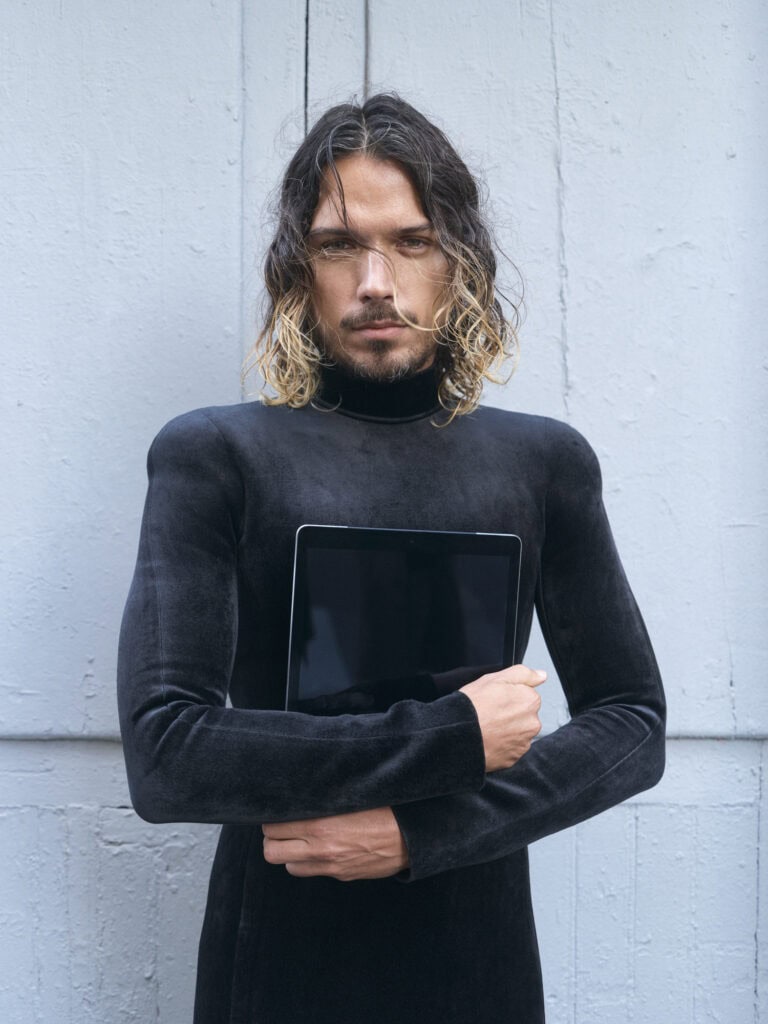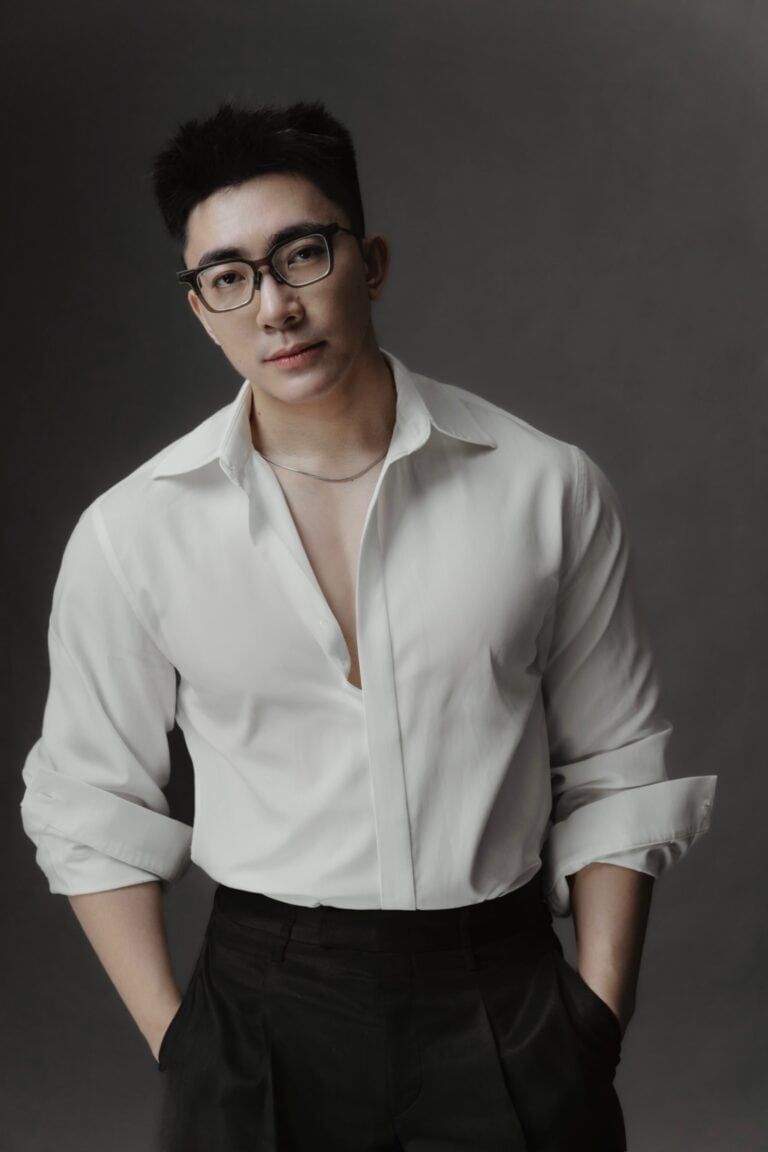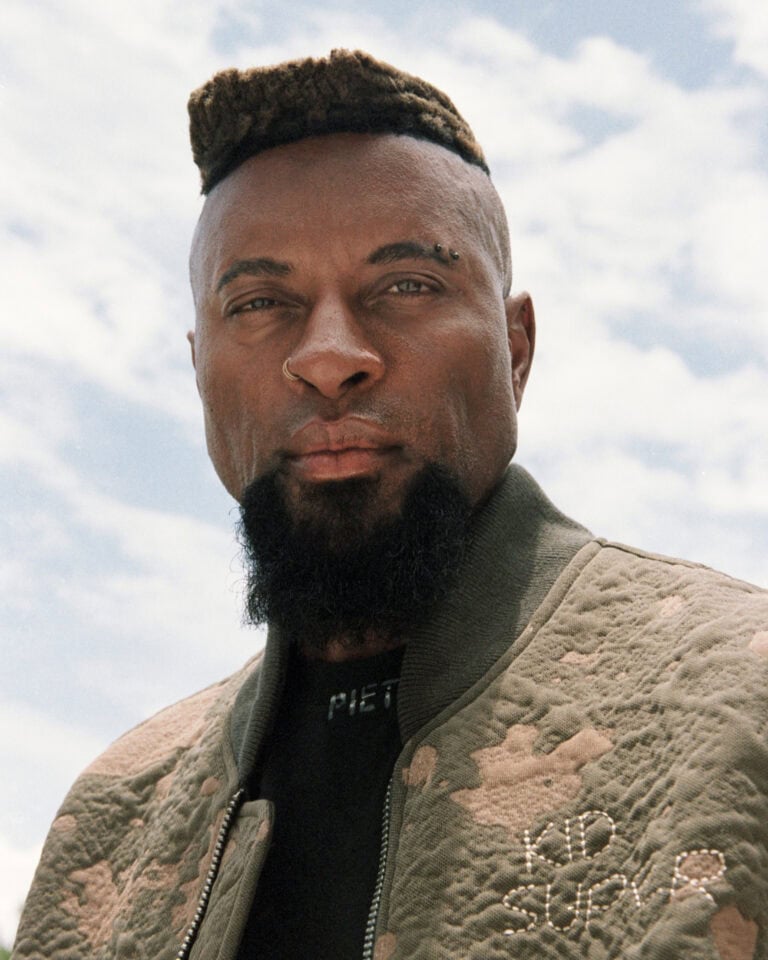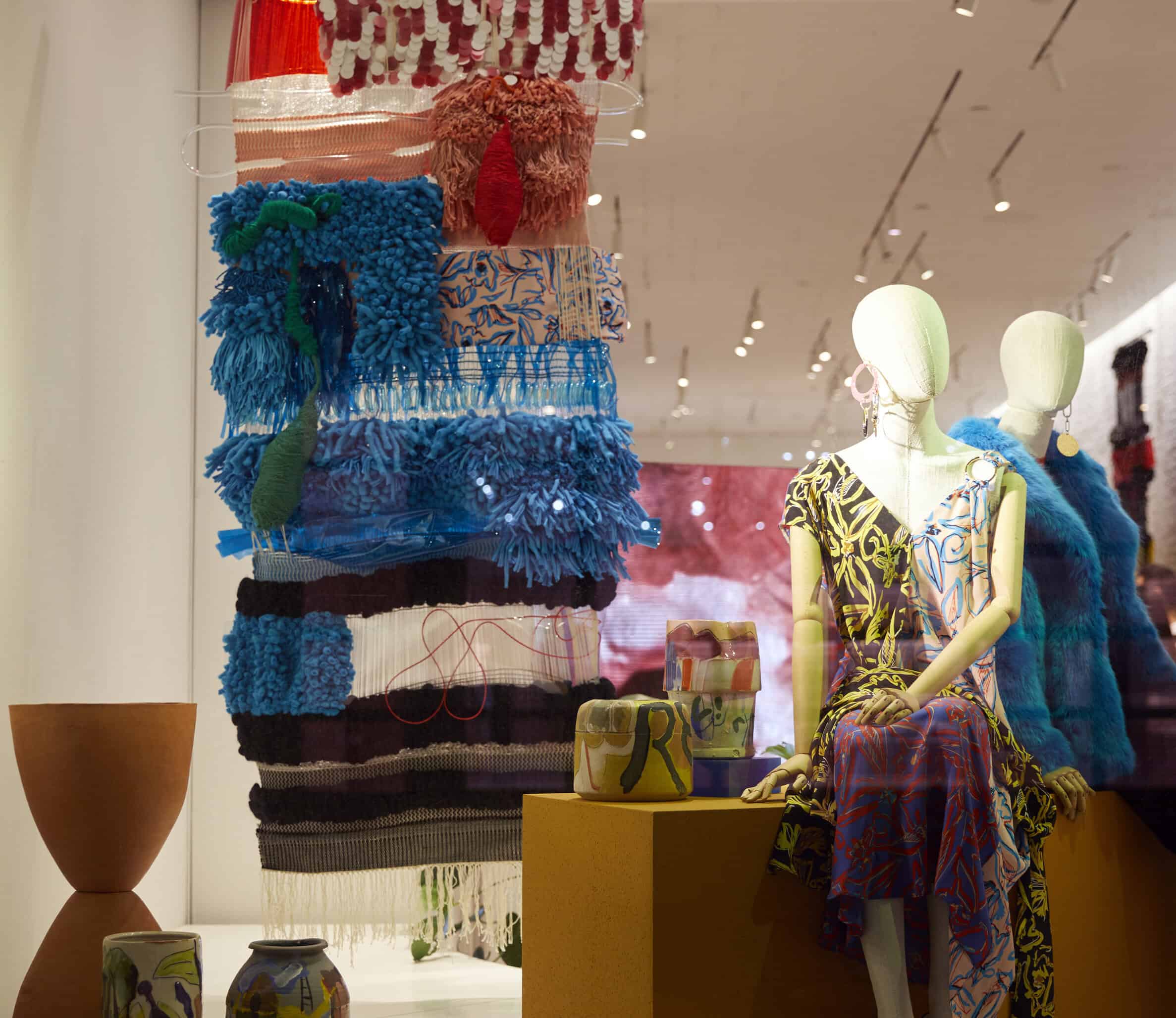
Desire Moheb-Zandi Dazzles at DVF
Stacy Seiler
Desire Moheb-Zandi’s work has caught the eye of Diane Von Furstenberg. Deservingly so, she has actively taken her love and family tradition of textile making and broken all of the rules. Her tapestries, which incorporate traditional weaving methods juxtaposed with non-traditional materials, techniques and unconventional found items, have formed a body of work that blurs the lines between innovative textile design and sculpture. In celebration of New York Textile Month, Diane Von Furstenberg commissioned Moheb-Zandi to create three unique tapestries as centerpieces that are featured through their SOHO store. The show is part of a larger campaign by DVF entitled “DVF Studio” to create ongoing collaboration between DVF collections and independent artisans with a goal of “partnering with artistic individuals and sharing an insight into their unique creative practices through a series of collaborations and events.”
IRK magazine caught up with Moheb-Zandi at the exclusive September 27th DVF event, celebrating her in-store installations.
IRK: When you began your 3-work commission for the Diane Von Furstenberg store in SOHO, you were given textiles from the DVF Spring/Summer 2017 collection. How did the collection inspire your work?
Desire Moheb-Zandi: In our initial meeting we thought that using the textiles from the collection would be a good idea because my materials are mostly industrial materials and novelty materials, so I thought it would be good to have the prints and the colors that the brand is known for and incorporate that by upcycling the fabrics. When I went to their fabric store I was very attracted to their Elsden print, which I used in the piece in the window. It is a print that is half hand-drawn and half digitally manipulated, which attracted me because I am very drawn to organic shapes. Also my tapestries are kind of, well… although I use a traditional loom, I use very non-traditional techniques and ways to make the work come to life by having some parts hanging, some parts tightly woven.
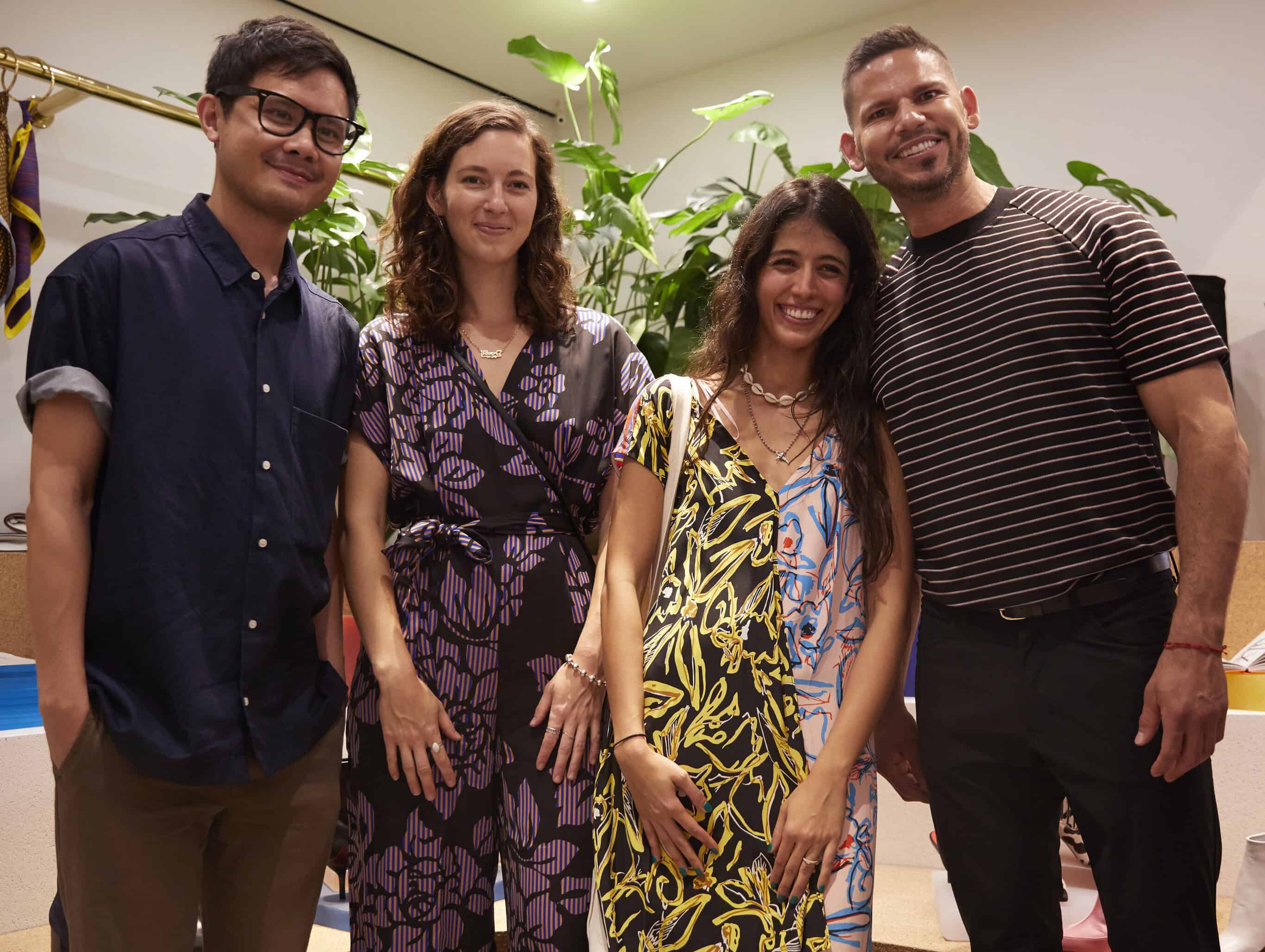
IRK: Has upcycling become an important part of your practice by incorporating materials that would normally be thrown away, and instead placing them into your work?
Desire Moheb-Zandi: Yes, I upcycle other people’s trash sometimes, because I think with the amount of things we consume today, it’s important to think about how we could incorporate them instead of discarding them. There are so many vibrantly colored plastics and rubbers, which I’m really attracted to. To add them into the tapestry gives me a big satisfaction. I like to mix the industrial rubbers with local yarns like regular Merino wool.
IRK: Yes, for that reason, your work reminds me of the sculptor Eva Hesse who loved incorporating industrial materials into her work.
Desire Moheb-Zandi: I love Eva Hesse!
IRK: Me too! And with your use of materials I feel that you work is a dance between textile and soft sculpture. How do you define that line between textile and soft sculpture in your own practice?
Desire Moheb-Zandi: I think that although the loom has been considered a woman’s space, the loom is traditionally women’s work, certainly in the art world it is dominated by males using the loom and there is a less-percentage of women in the art world. The loom is not my trophy; it is not my car. It is more like a bicycle from which I find the tools to express myself. I also like to build my own frames sometimes and do a tapestry. The idea is more about the materials that are interwoven together and I’m very attracted to the loom, because it’s like the first computer. It’s something so complex and yet so simple because there are endless possibilities of patterns that you could create or that you could manipulate with your hands.
IRK: Obviously people are taking notice of your craft, as your work is being featured by New York Textile Month at Diane Von Furstenberg. And for that reason, what do you think your work brings to the textile industry that is new or hasn’t been addressed yet?
Desire Moheb-Zandi: That’s a hard question, but what I guess is fresh about it is the sense of materials of course. Also, we’ve been discussing with Willem (Schenk), Li Edelkoort’s assistant, who also coordinates New York Textile Month, that my work has a sense of fetishism. Not in a sexual way, but how fetishism can be with anything that procures in your life and how you react to them. How in a sense art is also a fetish because you are repeatedly, obsessively creating something. But with the materials I use, I think the idea of what brings freshness to the work is my use of color, but more than anything the idea of breaking free from the loom. That is what I think makes it fresh more than anything.
IRK: Well, we too love your vision and thoughtful consideration to material reuse and experimentation, and we can’t wait to see what you are going to make next!
Desire Moheb-Zandi’s tapestries are currently on view at Diane Von Furstenberg, SOHO, located at 135 Wooster Street, New York City.
You can view more of Desire Moheb-Zandi’s work along with Upcoming Events and Artistic Collaborations taking place through DVF Studio at Diane Von Furstenberg stores. For our exclusive interview with Li Edelkoort, order a copy of our latest issue “Futurism” today!
Feature photo and photo of Moheb-Zandi with fellow DVF artists courtesy of DVF.
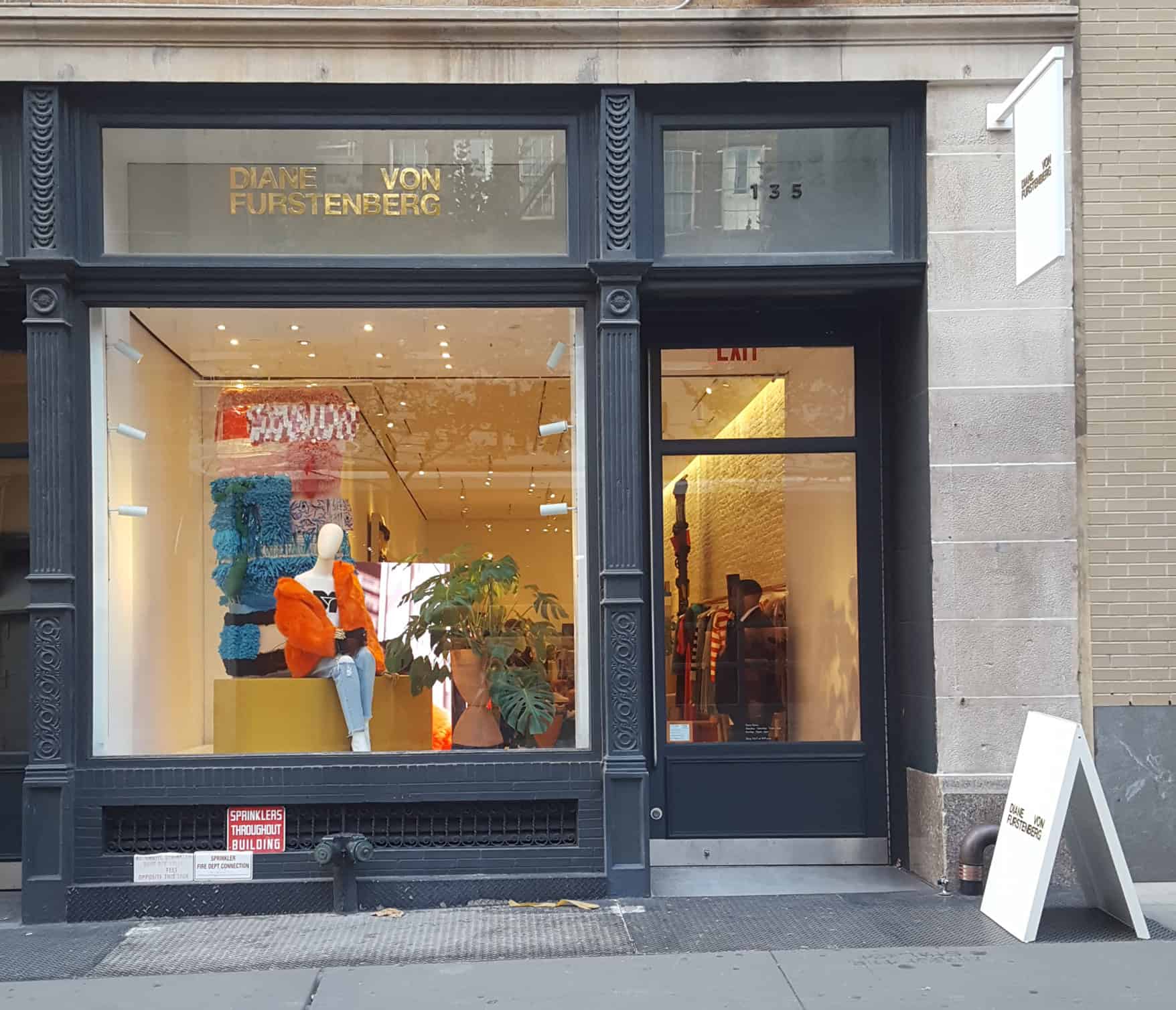
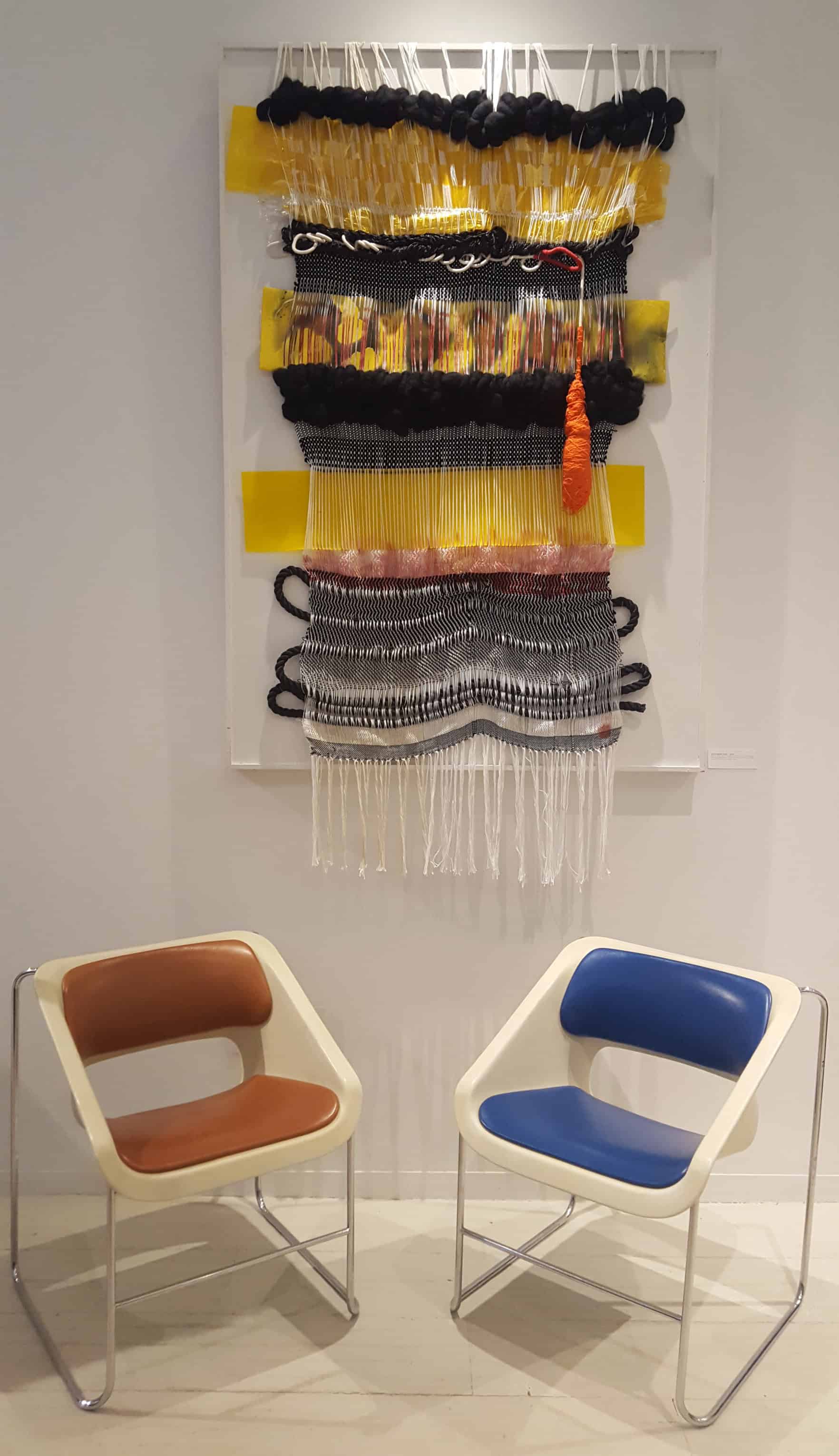
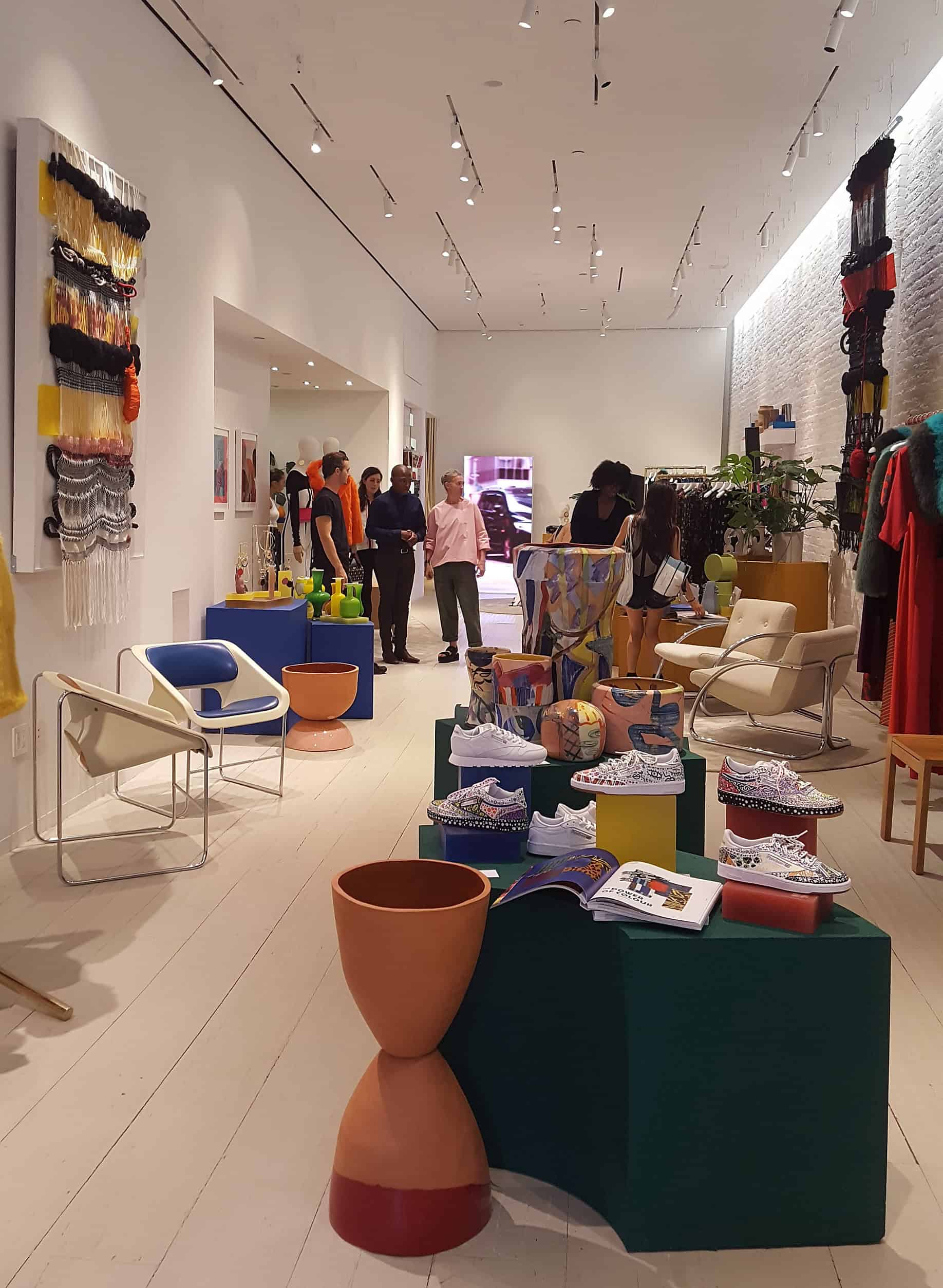
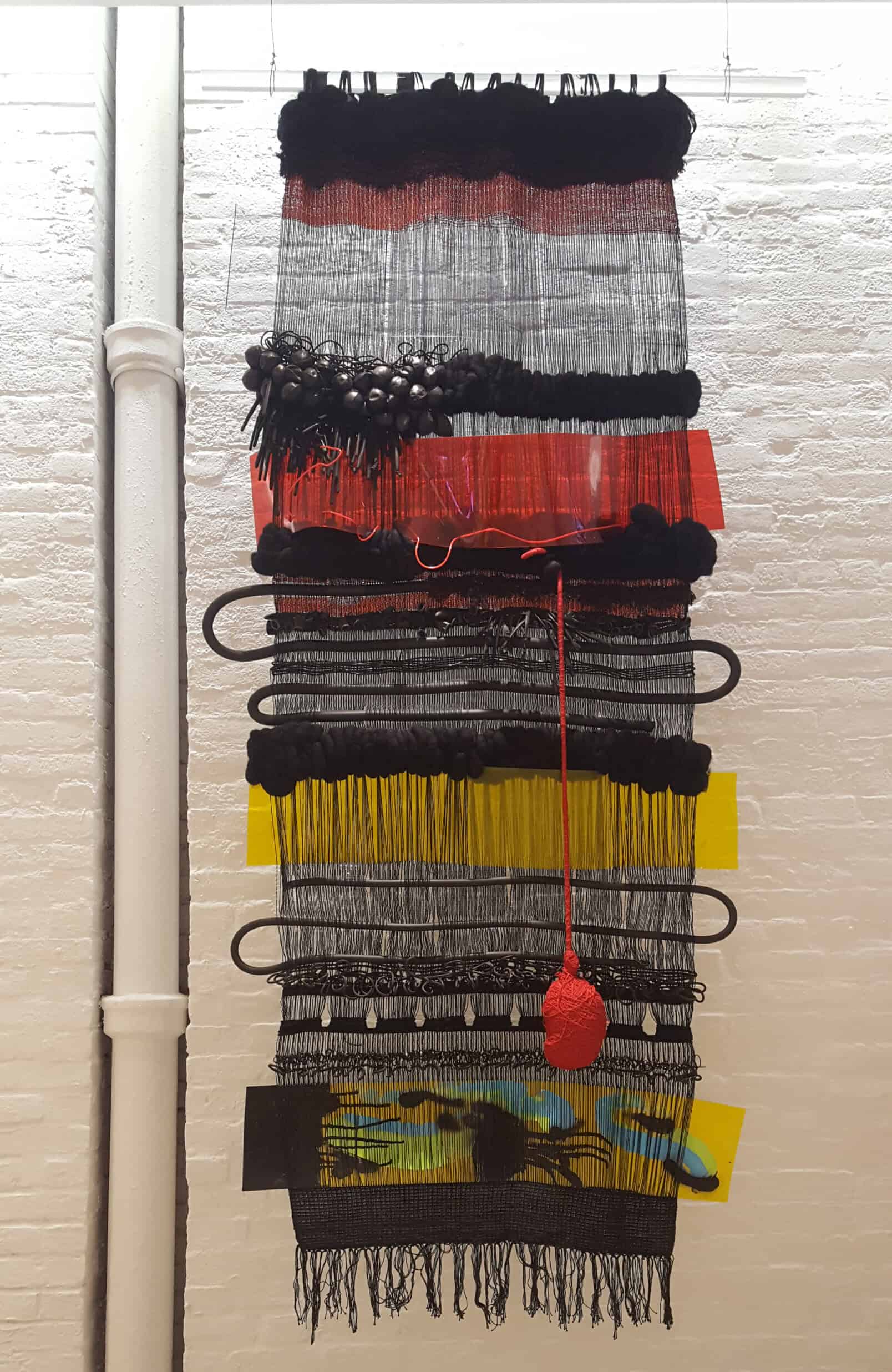
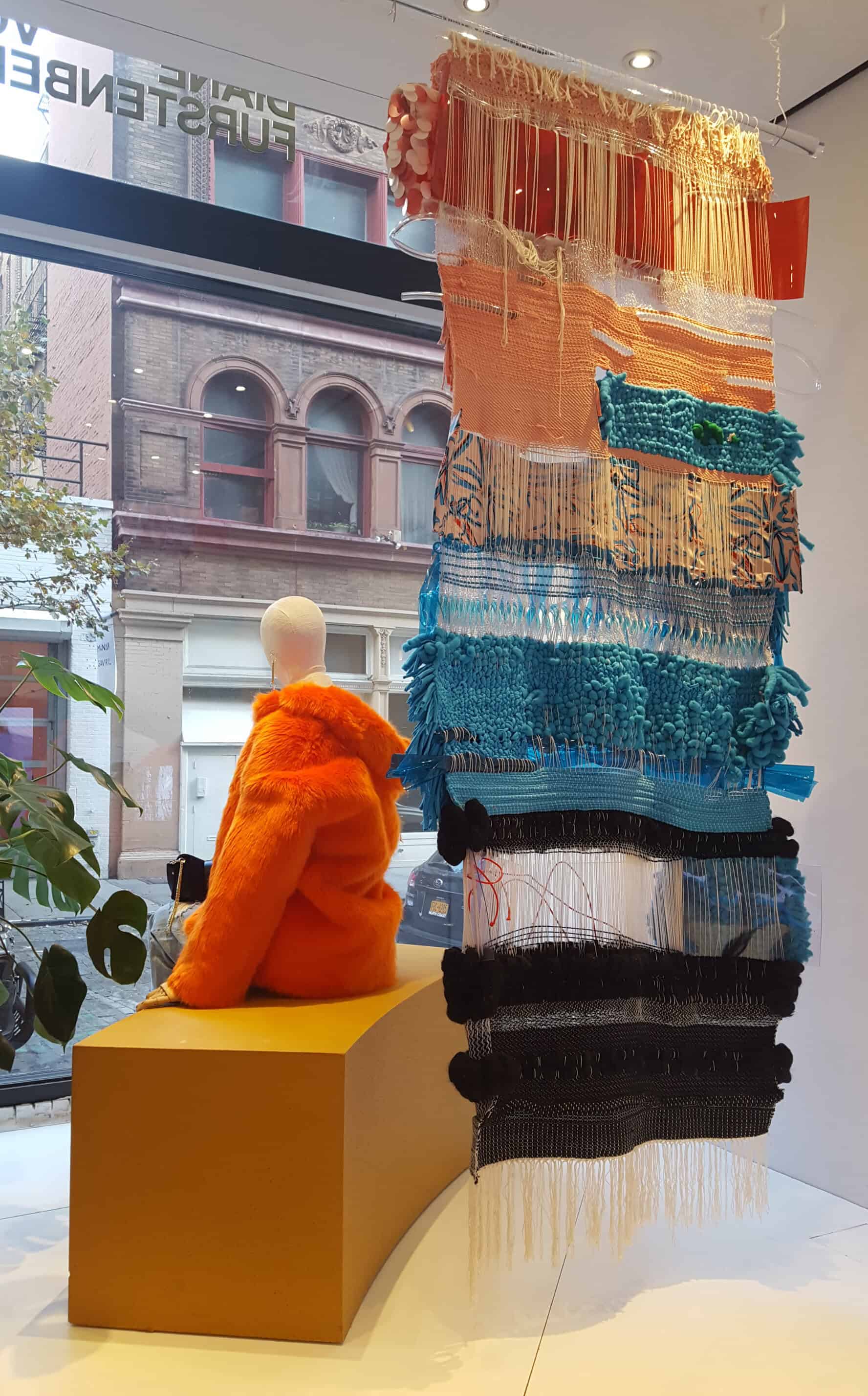
Share this post
Stacy Seiler is the Art Editor of Irk Magazine, joining the publication in August 2016. An accomplished artist, designer, writer and Assistant Professor at Parsons School for Design, Stacy has been a pioneer in the design industry since 1997. She began her career as a web designer and programmer focused on the corporate identity and branding of Fortune 500 companies including: FOX, News Corporation, AIG and McGraw-Hill.
For the past 11 years, Stacy has lectured on topics of Design Iteration, Typography, Information Visualization, Fashion and Fine Art at the esteemed Parsons School of Design, while balancing her time as a Contributing Writer of Arts and Culture at Downtown Magazine and a Docent of History and Preservation at Judd Foundation in New York City.
Through her research and drawings, Stacy’s art practice focuses on preserving the cultural past of New York City and beyond by exploring current issues of neglect and decay surrounding industrial architecture and its iconic connection to working-class communities. She has exhibited both nationally and internationally over the past 15 years.
Stacy graduated from the Maryland Institute College of Art, with a BFA in Fine Arts and a Minor in Art History. She received her MFA in Fine Arts from Parsons. Her work can be found on stacyseiler.com along with her daily musings on Instagram
Read Next


